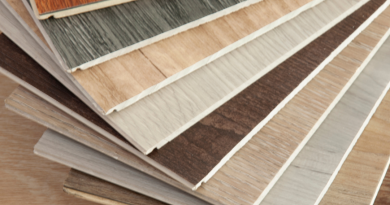Eco-friendly Food Packaging and where can I find them?
Food packaging
Packaging is the process of packing items and food packaging is the process of packaging food items into containers, wrappers, or packets. It is done to provide protection, and increase life expectancy to food items, and make carrying food items easier. Food packaging methods are utilized by all types of users, may they be companies selling their packed food items or workers packing their lunch for the office. The term packaging encompasses all types of packaging products from bubble wrap, blister packs to plastic bottles and carry-bags. However, food packaging relates to the packaging of food and beverages only.
What is eco-friendly food packaging?
The idea of creating Eco-friendly food packaging stems from Environmental-friendly food packaging that doesn’t harm nature after its utilization or when it becomes unusable. It doesn’t affect the stored items negatively, should be easily available in the market, is convenient to use, and has all the good values of regular packing products. Eco-friendly food packaging also follows the three rules of being reusable, reducible or decomposable, and recyclable. Reusable stands for not being a single-use item like a cloth bag instead of a polythene bag. The reducible stands for two meanings. First one, when using just a little does the work then there isn’t any need to use a lot. Second, the item should be reducible or bio-degradable means that it should decompose by itself with natural processes without any human interference when left unattended in a limited amount of time and without releasing any toxic elements.
Harms of regular packaging
Have you ever wondered what happened to the plastic waste and food packaging that people left unchecked after camping in the wilds with their family or friends? Or the plastic bottle that we throw out of the car window while driving on the highway? Or the empty medicine packet? Well, if you still don’t know then my friend, one day when the world will be devoid of any inhabitable place, you will still be wondering how it all happened.
The rapid rise in global pollution has uncovered the negative and not-so-beautiful/ugly side of regular packaging. While it is all types of packaging and not just food packaging but the food packaging pollution still constitutes the largest part of the complete packaging pollution term. Nearly 50% of the packaging process is done for food products only. The other half is occupied by pharmaceuticals, electronics, and other product packaging combined.
Packaging pollution is the biggest reason for blocked sewers and polluted channels. It should be known that just our commonly thrown single-use plastic bags take more than 1000 years to decompose. So, it is all removed manually and wastes a lot of manpower just to keep the drainage system of our cities up and running. It is also the biggest reason for the loss of marine life diversity in the oceans. Other types of plastics also took anywhere from centuries to millennia to decompose while simultaneously releasing many toxic elements and chemicals into the environment. And even after all that time they never ever fully decompose and remain to pollute our environment in one form or other.
Need of Eco-friendly Food Packaging
After the rapid rise in global pollution, many international organizations have come to realize that the problem of pollution is not something that can be put into the ‘to-do list’ and dealt with later. It has emerged as a problem that has to be addressed immediately. According to surveys, packaging pollution occupies nearly half of the total plastic pollution across the world. And plastic pollution shares the largest portion of the world’s total solid pollution. Despite being aware of the harmful effect of packings it is something that people can’t just stop using. The packaged items have become essentials in our day-to-day life. Packaging has become a necessity from being just a facility. But the pollution also has to be taken under control. So, arise the idea of using environmentally friendly packaging and eco-friendly food packaging. The idea is nothing new to the world and has been in use for centuries. Even ancient civilizations have been using eco-friendly methods of packing like using banana leaves, hemp bags, jute bags, metal containers, etc. So now the time has come for people around the globe to understand that there are options out there for perfectly substituting their regular packaging needs.
How to change to eco-friendly food packaging
While the change cannot just be started by a single person, the rich and able man should take the lead in starting a green and clean revolution. There are still many big MNCs that still use the old regular plastic for packaging purposes of their products. An example of it is snack food items. They still come in bags that are mostly made out of polypropylene. The industry owners should start utilizing eco-friendly packaging for their products.
The world keeps running and will not wait for the riches to change from being profiteers to environmentalists. So, it becomes a responsibility that mostly befalls the governments of different countries to make some strict rules restricting the use of non-biodegradable items and promoting their environment-friendly alternatives.
The government should work together with NGOs to spread awareness regarding the harms done by people’s unintentional acts of first using then throwing or disposing of plastic bags due to our environment. Only when people of the world start asking for eco-friendly food packaging when buying fast foods and beverages will there be a chance to stop landfilling and marine dumping.
Some Environmentally Friendly Packaging
There are a lot of good and easily accessible environmentally friendly packaging items. Here is a list of some of the most popular environmentally friendly packaging materials.
Kraft bags
Kraft paper or ready-made kraft bags are a very popular choice of people over polythene-made carry bags. These paper bags just like any other paper are made from wood pulp. But unlike regular paper, kraft paper is much stronger, elastic, and resilient. All these qualities made kraft paper a very suitable material for making carry bags, sacks, and wrapping paper. They are used from carrying flower bouquets to cement bags. It is very durable and easily moldable while also being biodegradable. It means it can both be reused and recycled or can be dumped to make compost after fulfilling its purpose.
Glass Bottle and Jars
Glass is known for being one of the most inert materials making it one of the most popular choices for making a container for food items with a tendency to easily get spoiled. The glass is made of which we have no shortage of and is easily reusable and recyclable. But glass containers are also very fragile which makes them not so suitable for packaging. Glass is a non-biodegradable material and takes millions of years to degrade, possibly never even degrade at all. So, it makes glass a difficult material to categorize but if used carefully can also be used indefinitely.
Metal packaging
Metallic containers are one of the oldest environment-friendly materials in use. But nowadays metal packaging has taken a new turn with the innovation of traditional tin and steel cans. With technological and industrial development, tin cans have made a name for themselves in the food and beverage industries. The metal bottles have a long life and can be utilized almost indefinitely. The metal cans provide standardized safety and sustainability over a large variety of drinks and foods. But same as glass, metal packaging also requires the right method for safely disposing of them. In the case of irresponsible disposal of metal, it can also take a lot of time to degrade. But it is not very harmful to the environment.
Compostable bowl and utensils
Usually made of leaves, sugarcane fibre, or banana leaves the compostable bowls are just the right thing to carry with you if you want a single-use bowl to eat something in camping or celebrating. They are made from 100% biodegradable which makes them completely safe for the environment. They also come in various shapes and designs to make them user-friendly.
Cardboard
Cardboard is also a 100% biodegradable material that is completely safe for mother nature. While cardboard may not be the best material for food packaging because of safety reasons, it is still one of the best packaging materials for the external protection of items. It is also one of the most recycled materials that are accepted and utilized by every company.
There are also a lot of other initiatives like using eco-friendly plastic for packaging which can be recycled or may be made of decomposable material, jute bags, coconut fibre bags, washable straws, and stirrers which are not a single-use item, and many others.
We can find these environment-friendly packaging at many places from your grocery store to the big supermarkets and even on online platforms.
Summary
We hope that the end of this paper will make you aware of the dangerous situation that our planet is facing right now. And how just by using an eco-friendlier packaging substitute for our needs we can contribute to the betterment of the world. After reading this, even if only some of our readers choose to change to using eco-friendly products then we believe that we have succeeded in our efforts to make the world a better place for all.



